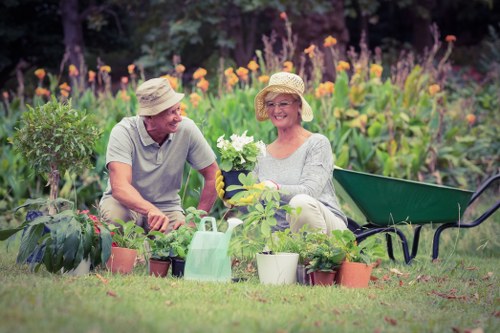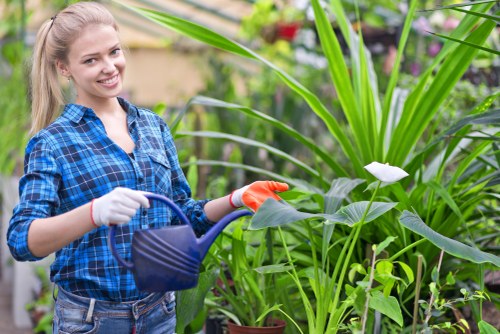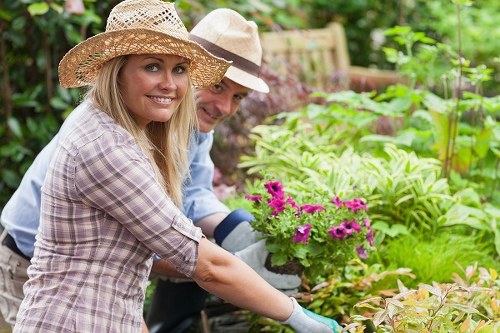Gardening in Stirling: Cultivating Green Spaces in the Heart of Scotland

Introduction to Gardening in Stirling
Stirling, known for its rich history and stunning landscapes, offers a unique environment for gardening enthusiasts. Whether you're a seasoned gardener or just starting, the area's climate and soil conditions provide ample opportunities to create beautiful green spaces.
The diverse range of plants that thrive in Stirling's temperate climate allows gardeners to experiment with various flora, from vibrant flowers to sturdy shrubs and trees. Understanding the local conditions is key to successful gardening in this region.
In this article, we'll explore the best practices, plant selections, and local insights to help you cultivate a flourishing garden in Stirling.

Climate and Soil Conditions
Stirling experiences a temperate maritime climate, characterized by mild summers and cool winters. This climate is conducive to a wide variety of plants, making it an ideal location for diverse gardening projects.
The soil in Stirling varies across different areas, but generally, it is fertile and well-draining. Conducting a soil test can help determine its pH level and nutrient content, ensuring that your garden receives the necessary care for optimal growth.
Incorporating organic matter such as compost can enhance soil structure and fertility, promoting healthy plant development. Additionally, understanding the local microclimates within Stirling can help in positioning plants for maximum sunlight and protection from harsh weather.

Choosing the Right Plants
Selecting plants that are well-suited to Stirling's climate is crucial for a thriving garden. Some popular choices include:
- Rhododendrons – Known for their stunning blooms and evergreen foliage.
- Bluebells – Perfect for adding a splash of color in spring.
- Holly – An excellent choice for winter interest and berry production.
Additionally, incorporating native plants can support local wildlife and reduce maintenance efforts, as they are naturally adapted to the area's conditions.
Consider mixing perennials and annuals to ensure year-round interest and continuous blooming throughout the seasons.

Gardening Techniques for Stirling
Implementing effective gardening techniques can make a significant difference in the success of your garden.
Raised Beds
Raised beds help improve drainage and soil quality, providing a controlled environment for plant growth. They are particularly beneficial in areas with heavier soils.
Companion Planting
Companion planting involves growing complementary plants together to enhance growth, deter pests, and improve yields. For example, planting marigolds alongside vegetables can naturally repel harmful insects.
Irrigation Systems
Installing efficient irrigation systems ensures that your plants receive consistent moisture, especially during dry spells. Drip irrigation and soaker hoses are effective methods for conserving water while maintaining plant health.

Local Gardening Resources
Stirling offers a wealth of resources for gardeners, including local nurseries, botanical gardens, and community gardening groups. These resources provide access to quality plants, expert advice, and opportunities to connect with fellow gardening enthusiasts.
Visiting local nurseries allows you to select plants that are well-suited to the area, while botanical gardens offer inspiration and educational opportunities. Joining community gardening groups can provide support and foster a sense of camaraderie among gardeners.
- Stirling Botanical Gardens – A beautiful place to explore diverse plant species.
- Local Nurseries – Offering a wide range of plants and gardening supplies.
- Community Gardens – Providing space and resources for collaborative gardening projects.

Seasonal Gardening Tips
Adapting your gardening practices to the changing seasons ensures that your garden remains healthy and vibrant throughout the year.
Spring
Spring is the ideal time for planting new blooms and preparing your garden for the growing season. Focus on soil preparation, planting annuals, and pruning deciduous trees.
Summer
During summer, prioritize watering, mulching, and controlling pests. Regular maintenance helps your plants withstand the heat and thrive.
Autumn
Autumn is perfect for planting bulbs, adding compost, and protecting plants from the approaching winter. It's also a great time to harvest late-season vegetables.
Winter
In winter, focus on planning for the next growing season, pruning evergreen plants, and providing shelter for sensitive species. Using protective covers can help safeguard your garden from frost.

Maintaining Your Garden
Regular maintenance is essential for a thriving garden. This includes tasks such as weeding, pruning, and fertilizing.
- Weeding: Remove unwanted plants to reduce competition for nutrients and water.
- Pruning: Trim overgrown branches to promote healthy growth and improve plant shape.
- Fertilizing: Provide essential nutrients to support plant development and flowering.
Incorporating sustainable practices, such as composting and using natural pest control methods, can enhance the health of your garden while being environmentally friendly.
Regularly inspecting your plants for signs of disease or pests allows for early intervention, ensuring that minor issues do not escalate.

Gardening Tools and Equipment
Having the right tools and equipment makes gardening tasks more efficient and enjoyable. Some essential tools include:
- Hand Trowel: Ideal for planting, transplanting, and soil aeration.
- Pruning Shears: Essential for trimming and shaping plants.
- Garden Fork: Useful for turning soil and removing weeds.
- Watering Can: Necessary for providing plants with adequate moisture.
- Gloves: Protect your hands from dirt, thorns, and potential irritants.
Investing in high-quality tools ensures durability and better performance, making your gardening experience more pleasant.
Additionally, organizing your tools in a dedicated shed or storage area can help keep your garden tidy and your tools easily accessible.

Gardening for Wildlife
Creating a wildlife-friendly garden enhances biodiversity and contributes to the local ecosystem. Incorporate plants that attract beneficial insects, birds, and other wildlife.
Attracting Pollinators
Plants such as lavender, sunflowers, and foxgloves are excellent for attracting bees and butterflies, which play a crucial role in pollination.
Providing Habitat
Include features like birdhouses, bee hotels, and water sources to create habitats that support various species.
Native Plants
Using native plants ensures that your garden provides food and shelter that local wildlife depends on, promoting a balanced ecosystem.

Local Gardening Events and Workshops
Stirling hosts numerous gardening events and workshops throughout the year, offering opportunities to learn and engage with the gardening community.
- Garden Fairs: Showcase the latest gardening trends and products.
- Workshops: Learn various gardening techniques and plant care strategies.
- Plant Sales: Purchase a wide variety of plants directly from local growers.
Participating in these events allows you to gain new insights, network with fellow gardeners, and stay updated on best practices for maintaining a healthy garden.
Keep an eye on local listings and community boards to stay informed about upcoming events and opportunities.

10-15 Nearby Areas to Stirling for Gardening Services
Expanding your gardening horizons beyond Stirling can connect you with a broader network of services and resources in the surrounding areas.
- Bridge of Allan: Located just north of Stirling, known for its charming riverside gardens.
- Denny: Offers a variety of local nurseries and gardening centers.
- Alloa: Features extensive public parks and community gardens.
- Falkirk: Home to the Falkirk Wheel and numerous landscaped gardens.
- Luncarty: Renowned for its picturesque countryside and horticultural activities.
- Kincardine: Offers coastal gardening solutions with salt-tolerant plants.
- Kirkintilloch: Known for its urban gardening initiatives and green spaces.
- Callander: A gateway to the Trossachs with beautiful mountain gardens.
- Dunblane: Features historic gardens and traditional Scottish plantings.
- Balfron: Offers a mix of rural and suburban gardening opportunities.
- Menstrie: Known for its community-driven gardening projects.
- Laurencekirk: Features diverse plant selections and garden services.
- Kinross: Offers both ornamental and vegetable gardening options.
- Fintry: A small village with dedicated gardening enthusiasts.
- Bonnybridge: Combines industrial heritage with green gardening spaces.
Each of these areas provides unique features and services that can enhance your gardening experience, whether you're seeking specialized plants, expert advice, or vibrant garden communities.

Conclusion
Gardening in Stirling is a rewarding endeavor, offering a blend of natural beauty and community support. By understanding the local climate, selecting appropriate plants, and utilizing available resources, you can create a thriving garden that enhances your living space and supports the local ecosystem.
Whether you're cultivating a small balcony garden or managing an expansive backyard, the tips and insights provided here will help you achieve your gardening goals in Stirling.
Ready to transform your garden? Contact us today to get started on your gardening journey in Stirling!
